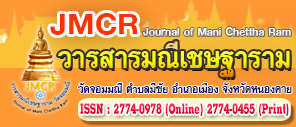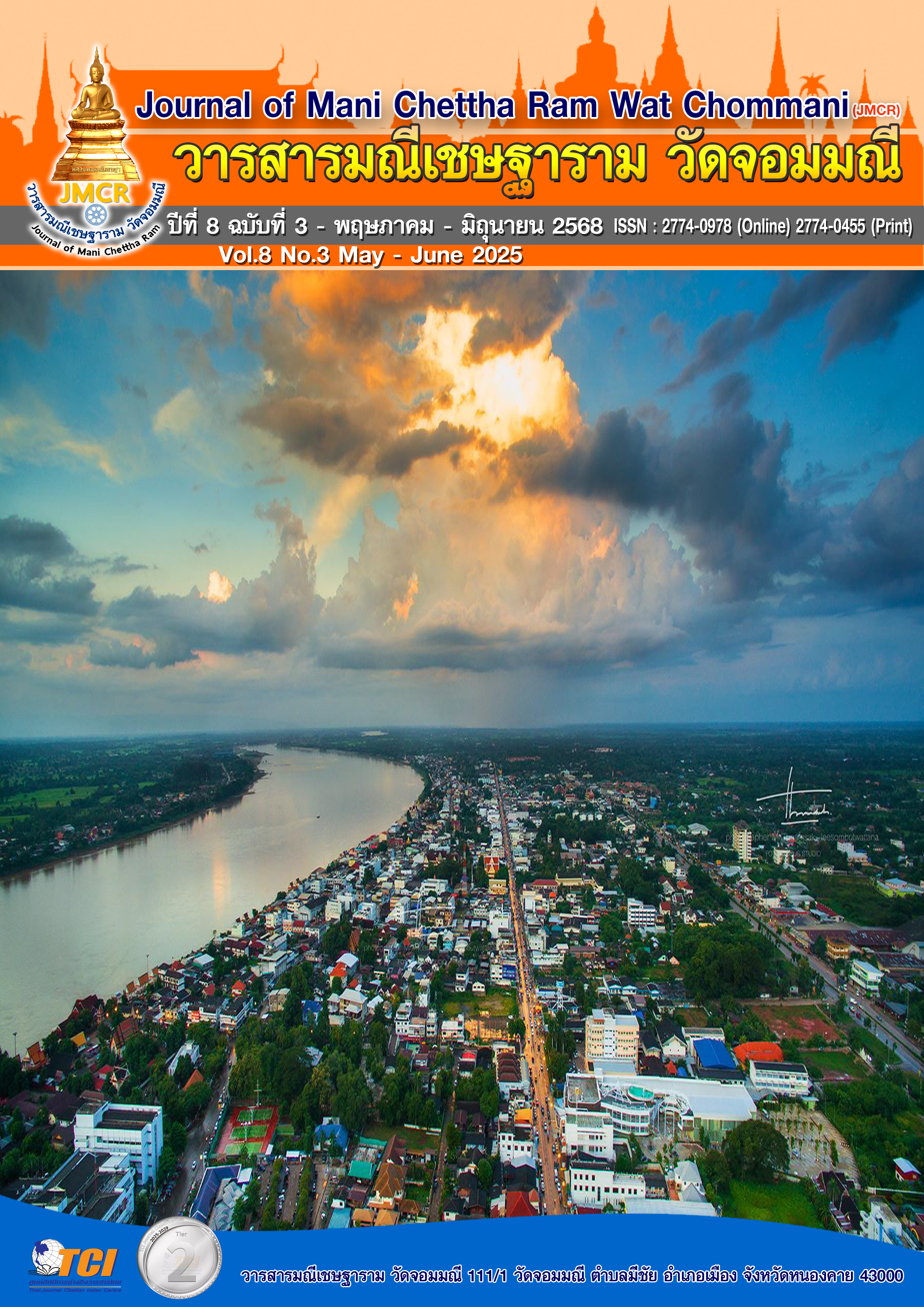GUIDELINES TO PROMOTION OF HUMAN RELATIONS BASED ON SARANIYADHAMMA 6 OF THE SCHOOL ADMINISTRATORS WITH COMMUNITIES IN SOMDEJCHAOPHAKO NETWORK CENTRE’S EDUCATION UNDER SONGKHLA PRIMARY EDUCATION SERVICE AREA OFFICE 1
Keywords:
Human Relations, Saraniyadhamma 6, Human Relations Based on Saraniyadhamma 6Abstract
The objectives of this research are as follows: 1) To study the human relations according to Saraniyadhamma 6 of school administrators and the community. 2) To draft guidelines for promoting human relations according to Saraniyadhamma 6 of the school administrators and the community. 3) To evaluate the guidelines for promoting human relations according to Saraniyadhamma 6 of the school administrators and the community. In the school of the Somdejchaophako Education Network Center. The sample group consisted of 118 teachers and the basic education committee of schools in the Somdejchaophako Education Network Center, selected using simple random sampling, the sample size determined using Krejcie and Morgan's table. 5 people and 5 experts by quantitative and qualitative research methods. The research tools were a five-level estimation scale questionnaire, an interview form, and an evaluation questionnaire.
The results of the research showed that: 1) Human Relations According to Saraniyadhamma 6 of School Administrators and the Community In the Somdejchaophako Education Network Center School, the overall and individual levels are at a high level. 2) Guidelines for Promoting Human Relations Based on Saraniyadhamma 6 of Educational Administrators and the Community In the Somdejchaophako Education Network Center School, it consists of 3 aspects: self-understanding according to the principles; Ethical Understanding 6, Understanding Others 6, Understanding the Environment 6 and 3) The appropriateness of the guidelines for promoting human relations according to the Saraniyadhamma 6 of the school administrators and the community. In the Somdejchaophako Education Network Center School, there was an appropriateness score of 97.77 percent.
References
ชูศรี วงศ์รัตนะ. (2564). เทคนิคการใช้สถิติเพื่อการวิจัย. (พิมพ์ครั้งที่ 15). กรุงเทพมหานคร: อมรการพิมพ์.
ธนานนท์ แสงทองทาบ. (2564). การสร้างมนุษยสัมพันธ์ของผู้บริหารกับชุมชน ตามหลักสาราณียธรรม 6 ของโรงเรียนขยายโอกาสทางการศึกษา อำเภอหนองบัว จังหวัดนครสวรรค์. ใน วิทยานิพนธ์ปริญญาครุศาสตรมหาบัณฑิต สาขาวิชาพุทธบริหารการศึกษา บัณฑิตวิทยาลัย มหาวิทยาลัยมหาจุฬาลงกรณราชวิทยาลัย.
นพดล เจนอักษร พระมหาไกรวรรณ์ ปุณขันธ์ (ชินทตฺติโย) และขัตติยา ด้วงสำราญ. (2564). ยุทธศาสตร์การบริหารเพื่อสร้างการมีส่วนร่วมกับชุมชน. วารสารวิชาการสถาบัน พัฒนาพระวิทยากร, 4(2), 87-100.
นพฤทธิ์ ก้อนใจ, ไพรภ รัตนชูวงศ์, และประเวศ เวชชะ. (2560). การศึกษาพฤติกรรมการบริหาร ความขัดแย้งของผู้บริหารสถานศึกษาในโรงเรียนสังกัด สำนักงานเขตพื้นที่การศึกษา ประถมศึกษาเชียงราย เขต 3. วารสารบัณฑิตศึกษา มหาวิทยาลัย, 10(1), 71-88.
นิมาลีกี ใบสะเม๊าะ. (2564). พฤติกรรมด้านมนุษยสัมพันธ์ของผู้บริหารสถานศึกษาในสังกัดสำนักงานเขตพื้นที่การศึกษาประถมศึกษาปัตตานี เขต 3. ใน วิทยานิพนธ์ปริญญา ครุศาสตรมหาบัณฑิต สาขาวิชาการบริหารการศึกษา คณะครุศาสตร์ มหาวิทยาลัยราชภัฏยะลา.
ประทีป ทับโทน. (2563). กลยุทธ์การบริหารสถานศึกษาด้วยความรับผิดชอบต่อสังคมของโรงเรียนสังกัดเทศบาล. ดุษฎีนิพนธ์ปริญญาครุศาสตรดุษฎีบัณฑิต สาขาบริหารการศึกษา บัณฑิตวิทยาลัย มหาวิทยาลัยราชภัฏวไลยอลงกรณ์ ในพระบรมราชูปถัมภ์.
พระราชบัญญัติการศึกษาแห่งชาติ พ.ศ. 2542 ที่แก้ไขเพิ่มเติม (ฉบับที่ 2) พ.ศ. 2545 และ (ฉบับที่ 3) พ.ศ.2553. (2552, 19 สิงหาคม). ราชกิจจานุเบกษา. เล่ม 116 ตอนที่ 74 ก. หน้า 1 – 19.
มณฑิรา บุตโยธี, วรกฤต เถื่อนช้าง และธานี เกสทอง. (2568). รูปแบบการบริหารเครือข่ายความร่วมมือทางวิชาการของผู้บริหารสถานศึกษา โรงเรียนสังกัดสำนักงานเขตพื้นที่การศึกษาประถมศึกษา ตามหลักสาราณียธรรม 6. วารสารวิจยวิชาการ, 8 (2), 297-314.
สำนักงานเขตพื้นที่การศึกษาประถมศึกษาสงขลา เขต 1 .(2565). พันธกิจ/วิสัยทัศน์. เรียกใช้เมื่อ 14 สิงหาคม 2566 จาก https://www.ska1.
Krejcie, R.V., & D.W. Morgan. (1970). Determining Sample Size for Research Activities. Educational and Psychological Measurement, 30(3), 607–610.




